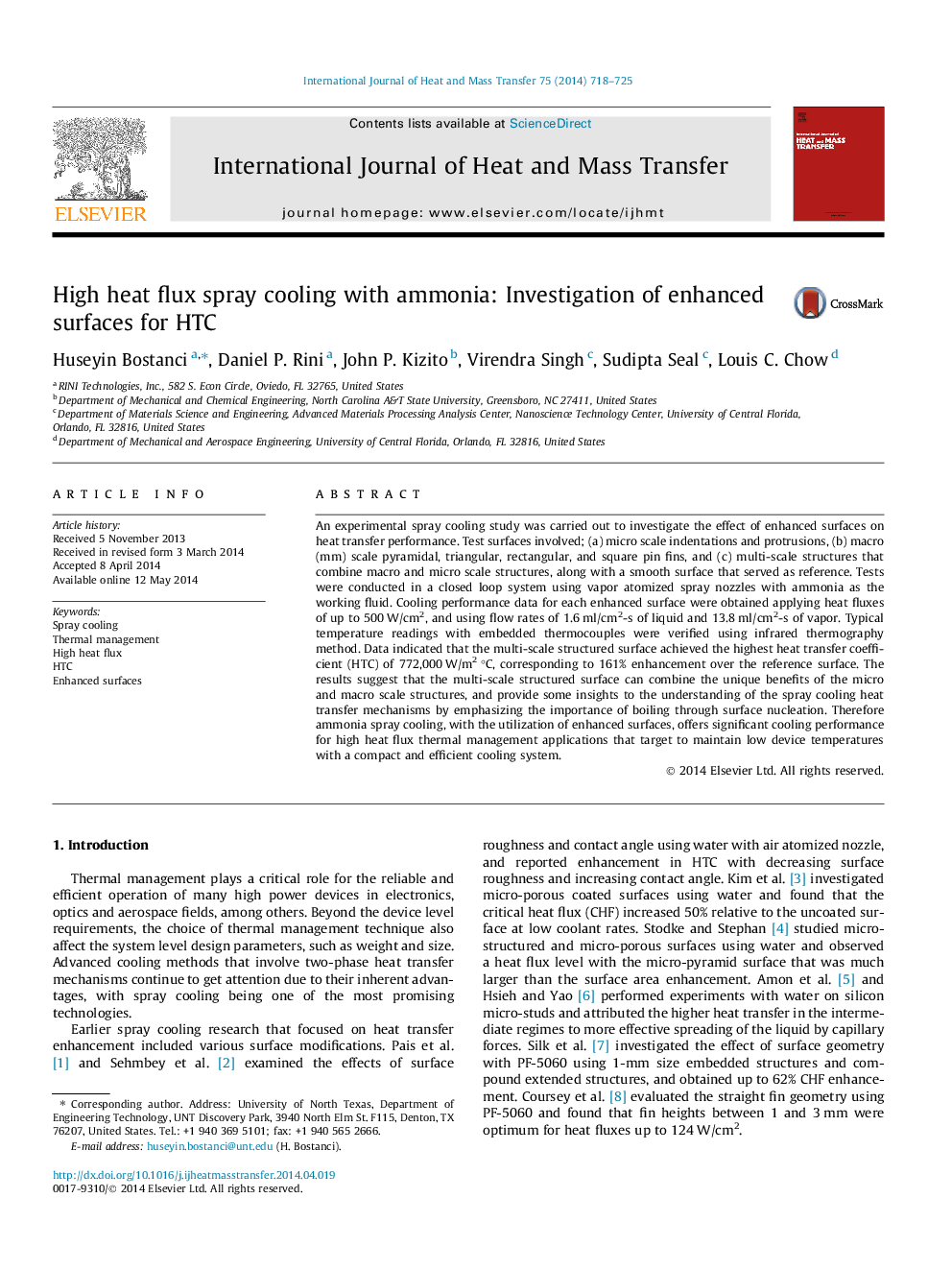| Article ID | Journal | Published Year | Pages | File Type |
|---|---|---|---|---|
| 7057147 | International Journal of Heat and Mass Transfer | 2014 | 8 Pages |
Abstract
An experimental spray cooling study was carried out to investigate the effect of enhanced surfaces on heat transfer performance. Test surfaces involved; (a) micro scale indentations and protrusions, (b) macro (mm) scale pyramidal, triangular, rectangular, and square pin fins, and (c) multi-scale structures that combine macro and micro scale structures, along with a smooth surface that served as reference. Tests were conducted in a closed loop system using vapor atomized spray nozzles with ammonia as the working fluid. Cooling performance data for each enhanced surface were obtained applying heat fluxes of up to 500 W/cm2, and using flow rates of 1.6 ml/cm2-s of liquid and 13.8 ml/cm2-s of vapor. Typical temperature readings with embedded thermocouples were verified using infrared thermography method. Data indicated that the multi-scale structured surface achieved the highest heat transfer coefficient (HTC) of 772,000 W/m2 °C, corresponding to 161% enhancement over the reference surface. The results suggest that the multi-scale structured surface can combine the unique benefits of the micro and macro scale structures, and provide some insights to the understanding of the spray cooling heat transfer mechanisms by emphasizing the importance of boiling through surface nucleation. Therefore ammonia spray cooling, with the utilization of enhanced surfaces, offers significant cooling performance for high heat flux thermal management applications that target to maintain low device temperatures with a compact and efficient cooling system.
Related Topics
Physical Sciences and Engineering
Chemical Engineering
Fluid Flow and Transfer Processes
Authors
Huseyin Bostanci, Daniel P. Rini, John P. Kizito, Virendra Singh, Sudipta Seal, Louis C. Chow,
